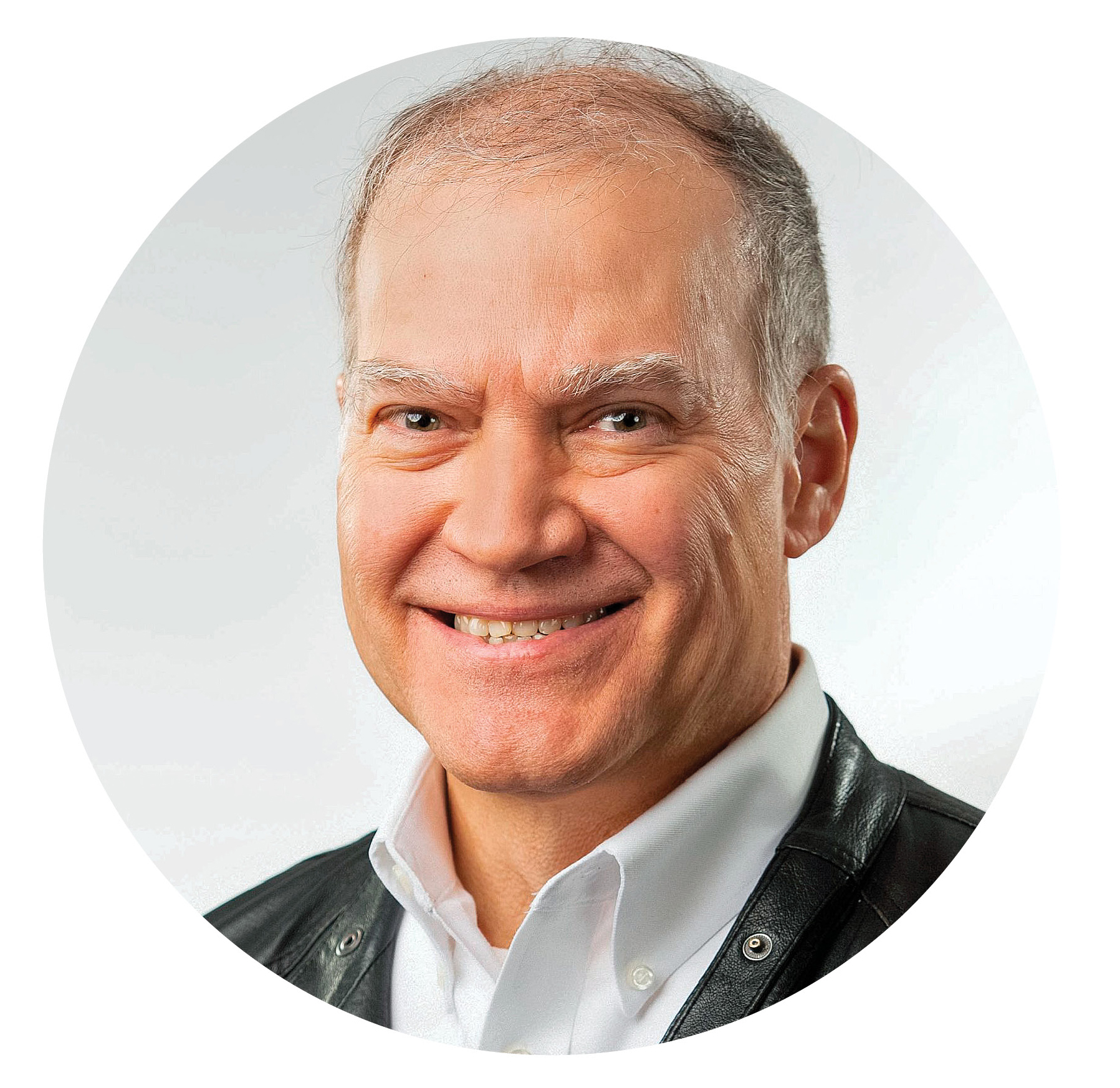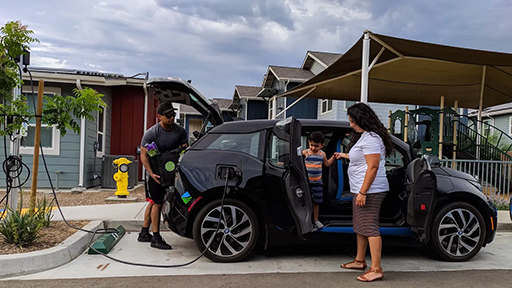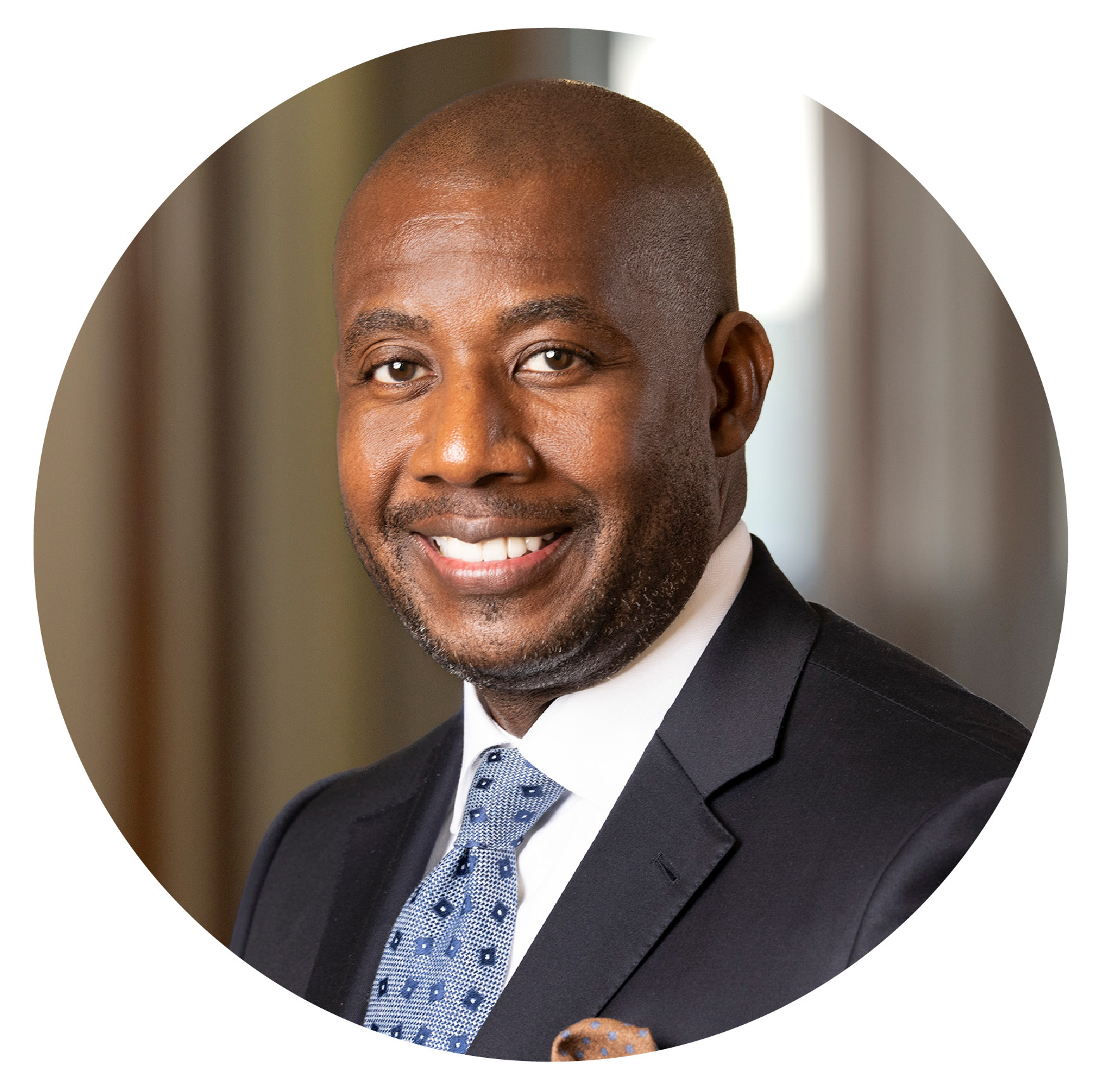The 11th annual Southern Economic Development Roundtable (SEDR) took place at the Pearl Hotel in Rosemary Beach, Fla., January 15-17, 2024. Many of the finest minds in economic development in the South were invited. SEDR members participated in two days of discussion, laughter and camaraderie that this year included three economists, as well as educators, workforce training directors, commercial real estate contractors and site consultants.
This section on what occurred and what was discussed at SEDR in late January is designed to brief you on the subject matter as it relates to the South’s economy and economic development trends in the region. In no particular order, the following is a long-form report, including some commentary, on SEDR@ThePearl2024’s speaker presentations.
SEDR speakers are like a “super group” of doctorate-level economic minds, an all-star team chosen from a “traveling baseball squad,” if you will. You get the picture.

|
Dr. Walter Kemmsies is the founder, CEO and Chief Economist of The Kemmsies Group in Savannah, Ga. His presentation was titled “Still Climbing the Wall of Worry?” |
With some quarters approaching 4 percent GDP growth in the last two and a half years, you would think Kemmsies’ presentation “Still Climbing the Wall of Worry” goes without saying. Indeed, the data shows an economy earning more than a “soft landing.” The resiliency of the nation’s economy, specifically the South’s economy, has been more like a massive “land-and-bounce” based on the data.
There are two incredibly important factors in that “bounce,” because for the last three years, they are happening at the same time. There is a maturing reshoring market as the U.S., specifically the South, is soaking up the trend of manufacturers bringing back factories from Asia and elsewhere to the U.S. to make things for U.S. consumption.
The wind of reshoring is peaking at the same time unprecedented investments are being made in the Southern Automotive Corridor with the electrification of automobiles, trucks and even planes.
Dr. Kemmsies’ focus points during his presentation:
• Base case: +/- 2 percent RGDP growth, recession risk has declined but geopolitical tensions could change that.
• “Fiscal policy in the form of the IIJA (Infrastructure Investment and Jobs Act) and IRA (Inflation Reduction Act) prevented monetary policy from causing a recession.
“Two sets of structural changes have confused economists and policymakers,” Kemmsies said. “The first is the recovery from the effects of excessive COVID fiscal stimuli that saw consumer spending surge over 20 percent in a short period of time. This created extreme congestion, helped inflation surge, and transportation services providers have significantly over-invested in capacity.
“The second set reflects changes to the macro economy via a declining working age population growth rate, the subsidies to manufacturing, the U.S. and Europe pulling away from China, significant efforts to upgrade U.S. infrastructure, technological advances such automation, robotics and artificial intelligence. Overcoming significant labor shortages in the U.S. requires significant investments in automation.”
Dr. Kemmsies’ geopolitical concerns include a range of outcomes regarding the “localized” Russia-Ukraine and Israel-Hamas and Hezbollah conflicts as well as the Houthis in Yemen committing random acts of terrorism (localized) on shipping in the Red Sea and the Gulf of Aden. An expansion of these tensions could have impacts on GDP and trade, etc. He mentioned that Taiwan and Ukraine (Europe) conflicts, if expanded, could have a potential global scale effect.
One other risk Kemmsies discussed during his SEDR presentation was the labor shortage, a subject SB&D brought up in a cover story almost 10 years ago. Labor demographics are dismal and Kemmsies made the point that in 2023, the U.S. unemployment rate averaged 3.6 percent, the lowest in 50 to 60 years. We have read for years now that job openings exceed the number of unemployed people seeking work.
Kemmsies said, “The labor shortage will persist because of historically low working age population growth and an out-of-date U.S. immigration policy. Automation will increasingly fill the gap. However, mechanization allowing workers to work from home might be the best intermediate solution.”
As SB&D has reported, according to many demographic studies, on average in 2023, about 1,000 people a day in the U.S. turned working age (which is age 16 as defined by the U.S. Census). However, every day on average in 2023, about 10,000 people turned age 64 (the last year the Census counts as working age).
Without some semblance of an immigration policy — Kemmsies called the policies in place “outdated” — there are just so many years of losing 8,000 to 9,000 people in the workforce every day (more counting deaths) before we literally run out of labor.
For example, we are currently observing something never seen before in economic development in the South. State economic development agencies are actually going public that they intend to recruit/steal trained labor from other states through various marketing programs, especially in the automotive manufacturing sector.
 The China factor is no more. The new threat to the South and reshoring is Mexico.
The China factor is no more. The new threat to the South and reshoring is Mexico.
When labor becomes significantly eroded in the U.S. — and it is happening every day — companies will begin to slow their interest in the South and focus their gaze on Mexico, where labor can be backfilled for decades moving forward. That is why a vetted, smart immigration policy must be implemented. Mexico is our new great competitor. Why?
Site consultants and economists will say that it is impossible at this point to prove to a manufacturer or service firm that labor can be backfilled 25 years from now in the U.S. In the South, the labor situation is a little more favorable as migration from other U.S. regions means millions of people each year are moving to sunnier climes, whether they be in Alabama, Kentucky, Louisiana, Texas or South Carolina. . .really, any Southern state.
However the facts are this:
Fertility rate U.S.: 1.6 percent
Fertility rate Mexico.: 1.9 percent
People aged 65 or older U.S.: 17.3 percent
People aged 65 or older Mexico: 8.3 percent
Source: Statista
Kemmsies’ statement regarding “the effects of excessive COVID fiscal stimuli that saw consumer spending surge over 20 percent in a short period of time” is correct in my view.
In less than 20 years, the U.S. has faced two of the most daunting challenges to its economy in six generations. Those, of course, would be the Great Recession under President Bush/Obama and COVID under President Trump/Biden. Yet, the stimuli designed to quell those two catastrophes were pretty much
opposites.
There was a ridiculous spending spree to save small businesses, families and individuals during and after the pandemic, to the tune of about $5 trillion. That does not even count the IIJA and IRA tax incentives of over $2 trillion.
Sure, stimulus checks were given out to individuals, families and small businesses in Biden’s first year in 2020 and beyond. But it was like treating a dire case of pneumonia with a grenade.
Then again, COVID was a new challenge, an unfamiliar one. Did the U.S. overreact? Maybe. But I probably knew about 100 people who died from it.
No one seemed to know how much needed to be apportioned to try and find a way for the economy to land softly from the pandemic. Just like no one seems to know what the market share will be for electric vehicles in 2032. (See the next segment.)
But, the $5 trillion worked. The data clearly shows that it did.
The Federal response to COVID was different from the response to the Great Recession.
First and foremost, only about $1 trillion was doled out between 2007 and 2009 by the Obama administration to boost the economy, compared to arguably $7 trillion to soft land and actually bounce after COVID. We all knew many small businesses that didn’t make it through the Great Recession.
But COVID wiped out so many more. If you recall, no one was flying much, meaning working from home became the norm. Public transportation shut down; you could not go to a movie or a restaurant. You could barely go to the market or your physician.
But the spread of the virus was curtailed.
For you nonbelievers, ask yourself, “What if the Federal, state and local response to COVID had not worked? Today, this nation would be in a world of hurt.
An excerpt from The New York Times about COVID stimuli
Here is part of a story written by Alicia Parlapiano, Deborah B. Solomon, Madeleine Ngo and Stacy Cowley published in The New York Times about two years ago in March 2022:
“Stimulus bills approved by Congress beginning in 2020 unleashed the largest flood of federal money into the United States economy in recorded history. Roughly $5 trillion went to households, mom-and-pop shops, restaurants, airlines, hospitals, local governments, schools and other institutions around the country grappling with the blow inflicted by COVID-19.
“Economists largely credit these financial jolts with helping the U.S. economy recover more quickly than it otherwise would have from the largest downturn since the Great Depression: The pandemic recession was the shortest on record, lasting only three months.
“What the money did was to basically make sure that when we could reopen, people had money to spend, their credit rating wasn’t ruined, they weren’t evicted and kids weren’t going hungry,” said Louise Sheiner, an economist with the Brookings Institution. “It is a lesson that if you don’t want a recession to have really long-lasting bad effects you spend a bunch of money and you prevent it.” (The New York Times, March 11, 2022)
Here is where the COVID response funds went:
Recipient Amount
Individuals and families $1.8 trillion
Businesses $1.7 trillion
State and local aid $745 billion
Health care $482 billion
Other $288 billion
Source: White House
In contrast, President Obama was far more conservative in his administration’s dole-outs during and after the Great Recession. Most of that fiscal stimulus was to save the financial services industry, the housing industry and the domestic automotive industry, specifically General Motors and (at the time) Chrysler. Well-known banking institutions didn’t make the stimuli list, some were bought out, and some simply disappeared.
To conclude this report on Kemmsies presentation, Walter said, “Since the 1990s, the Fed’s track record is 50/50 on mid-cycle tightening. Greenspan achieved a soft landing in 1994-1995, Bernanke caused a very hard landing in 2007-2009 (longest recession since the Great Recession). Powell is not an economist and talks as if the 2020s are like the 1970s.” (That statement was quite interesting since the Federal Reserve was in the room at The Pearl.)
 Alan Amici is the CEO at the Center for Automotive Research based in Ann Arbor, Mich. His presentation was titled “The EV Transition.”
Alan Amici is the CEO at the Center for Automotive Research based in Ann Arbor, Mich. His presentation was titled “The EV Transition.”
The Center for Automotive Research is an independent, non-profit organization producing industry-driven research and fostering dialogue on critical issues facing the automotive industry and its impact on the U.S. economy and society.
Alan Amici spent most of his career with Chrysler, which is now part of Stellantis NV. Stellantis is the result of a merger between Fiat Chrysler and PSA Group, forming one of the largest automakers in the world. Stellantis owns several subsidiaries in addition to Fiat and Chrysler, including Comau, Teksid, Mopar and Maserati.
SB&D brought Amici down from Michigan as the foremost expert on all that is happening in the electrification of the automotive industry, of which the South is leading all U.S. regions in EV and EV-related investments.
Amici showed the audience exactly how much has been invested by automotive original equipment manufacturers in North America each year since 2009 all the way up to the end of 2023.
To give you some examples, in 2009, approximately $4 billion was invested by combustion OEMs in North American (non-EV). From 2009 to 2020, 2015 saw the most investments, almost all of which was then non-EV with approximately $37 billion invested.
In 2018, just six years ago, only about $4 billion was invested in North America by OEMs. That $4 billion was split down the middle for non-EV and EV investments.
Fast forward to 2020, almost $10 billion was invested, most of which was EV-related.
Then, Amici showed SEDR members that in 2021, nearly $10 billion was spent by OEMs on the continent (95 percent EV-related), $53.8 billion in 2022, and $82.5 billion in 2023. Again, almost all of which was on electrification.
That totals $146 billion spent on EV and non-EV investments in three short years, with only about $13 billion spent in North America on non-EV, or combustible engine vehicles and parts.
At that point, an SEDR member in the back yelled out, “Then this better work, right?”
Automaker announced electrification investment by region in North America (2018-2023):
Region Investment ($USD)
United States $133 billion
U.S. South $67.1 billion
U.S. Great Lakes $61.1 billion
U.S. Other $4.8 billion
Canada $24 billion
Mexico $12.6 billion
Note: U.S. South includes: Alabama, Florida, Georgia, Mississippi, North Carolina, South Carolina, Tennessee and Texas
U.S. Great Lakes includes: Illinois, Indiana, Kentucky, Michigan, Ohio and Missouri.
So, as you can see by Amici’s EV investment data, the South and what we call the Midwest dominate the EV game, with only $4.8 billion being invested in the Northeast and the West. Yes, the South and the Midwest have rung up almost $130 billion in mostly EV-related investments in less than six years.
It should also be noted that SB&D considers the South to include Kentucky and sometimes Missouri, so the gap is somewhat wider between the South and the Midwest in EV investments.
Then again, essentially, the vast majority of domestic automaker R&D and a lot of foreign R&D is located in Michigan, which leads all states with $32.2 billion invested since 2018. Georgia ($22.1 billion) and North Carolina ($22.1 billion) are sitting in second and third place so far.
Like Kemmsies, Amici also spoke about the Inflation Reduction Act and the Infrastructure Investment and Jobs Act and how it has almost overnight impacted the automotive industry in the U.S.
All of the massive investments being made in the EV industry will see losers and winners. We have already had a delay in Rivian’s $5 billion plant east of Atlanta. However, since 2019, 87 percent of the total $191.4 billion invested by OEMs in North America is an investment in electrification and next generation mobility.
 Why? Easy answer: Federal incentives are incredibly lucrative for automakers — up to $7,500 per new vehicle, according to Amici. And those clean new vehicle credits are for cars and batteries made in North America only. And they are available through 2032 with no quota limit. And at the same time, this year was the first where foreign entity of concern restrictions were passed by the Feds.
Why? Easy answer: Federal incentives are incredibly lucrative for automakers — up to $7,500 per new vehicle, according to Amici. And those clean new vehicle credits are for cars and batteries made in North America only. And they are available through 2032 with no quota limit. And at the same time, this year was the first where foreign entity of concern restrictions were passed by the Feds.
As a result, Amici forecasted that a 67 percent market share in the U.S. for EVs by 2032 was being “optimistic.” A 39 percent share is “accelerated, however predicted,” and a 20 percent “baseline” share by 2032 would result from the “unprecedented” EV investments in North America, where the Southern Automotive Corridor is leading all regions and countries.
To conclude, here’s a quote from Amici at SEDR@ThePearl2024. It’s a good one, worth remembering.
Amici: "We are in the fourth year of a 110-year-old industry.”
Whoa! That would be next-generation mobility in this transition by a person who has worked in automotive for 40 years now.
 Adrienne Slack is vice president and coordinating regional executive at the New Orleans Branch of the Federal Reserve Bank of Atlanta. She was to partner with Dr. Douglas Scarboro of the Memphis Federal Reserve with a presentation at SEDR, but Scarboro was snowed in and couldn’t make it. However, part of his presentation did!
Adrienne Slack is vice president and coordinating regional executive at the New Orleans Branch of the Federal Reserve Bank of Atlanta. She was to partner with Dr. Douglas Scarboro of the Memphis Federal Reserve with a presentation at SEDR, but Scarboro was snowed in and couldn’t make it. However, part of his presentation did!
Adrienne Slack’s boss is Atlanta Federal Reserve Chairman, Dr. Raphael Bostic. All three — Bostic, Scarboro and Slack — are experts on monetary policy. All three have spoken at Southern Business/SEDR events.
While Adrienne and Scarboro’s presentation had no real title, we loved the disclaimer; “The views we will express are our own and do not necessarily reflect the positions of the Federal Reserve Bank or the Federal Reserve System.”
Slack first explained the areas she serves — the Atlanta Fed includes parts of Tennessee, Louisiana and Mississippi, and all of Alabama, Georgia and Florida.
 The St. Louis Fed — where Douglas Scarboro is located — includes parts of Tennessee, Kentucky, Missouri, Illinois, Indiana and all of Arkansas.
The St. Louis Fed — where Douglas Scarboro is located — includes parts of Tennessee, Kentucky, Missouri, Illinois, Indiana and all of Arkansas.
Adrienne and Doug’s presentation displayed key facts about last year and the beginning of this year. Here they are:
Federal Open Market Committee Summary of Economic Projections for 2024:
Real GDP Growth (Q3 2023): 4.9 percent
Core PCE Inflation (November 2023): 3.2 percent
PCE Inflation Rate (November 2023):
2.6 percent
Unemployment Rate (December 2023): 3.57 percent
Fed Funds Rate (January 4, 2024):
5.3 percent
Conclusion: Both Dr. Douglas Scarboro and Adrienne Slack of the Fed reported this:
1. Contacts report conditions continue to normalize.
2. Cost pressures are moderating, and firms report increased price sensitivity.
3. Availability of labor continues to improve, though hiring is largely focused on attrition.
4. Key risks: softening demand, credit constraints, insurance costs, geopolitical.
The risks list from Adrienne Slack and Feds are similar to Dr. Kemmsies’ list, aren’t they?
 Lowrey Crews is the founder and CEO of The 18th Ward, New Orleans, La. His presentation was titled “Strengthening Our Communities: A Youth Workforce Development Model.”
Lowrey Crews is the founder and CEO of The 18th Ward, New Orleans, La. His presentation was titled “Strengthening Our Communities: A Youth Workforce Development Model.”
At SEDR, I pointed out many of the most important stories and trends regarding economic development in the region. One certainly is that economic development and community development are merging into the same thing. Without a “sense of place,” a phrase used often by Richard Florida and J. Mac Holladay, there is no chance to recruit labor in a labor-less world.
I can think of one place in the South that has not achieved a “sense of place” but it is trying to find it and will. That would be Blytheville, Ark., in the Delta. Mississippi County, Ark., where Blytheville is located, is the largest steel-producing county in the country, employing thousands by Big River Steel, U.S. Steel, Nucor Steel, Nucor-Yamato, Atlas Tube, Tenaris, Arkansas Mechanical and HYBAR.
South of Blytheville is the town of Osceola, which has achieved a “sense of place” and is where most of the steel workers — some making nearly $200,000 a year — live.
Lowrey Crews and his “18th Ward” (there are only 17 wards in the Crescent City) has helped New Orleans find a “sense of place.” Lowrey and his team have created a thousand jobs by using existing community resources to invest in the next generation of leaders.
They do this with the creation of a pipeline of programs serving kids ages 3 to 24 and use sports as the vehicle to advance positive development, promote gender and racial equity, and build a stronger community.
From the 18th Ward website:
“We want our kids to have fun AND learn. During each practice, kids rotate in small groups to different stations. They participate in skill-building exercises and game-based activities.
“We don’t draft or rate players. Conversations after each practice/game are less about the scoreboard and more about which skills a player is improving on during games and which one they want to work on to get better. Our program is designed to maximize time, build skills, and make sure fun isn’t lost during competition.
“We are committed to providing a low-cost program. We want you to play with us and believe cost should never be a barrier to a child’s participation. We have a sliding scale participation fee model and families can choose an option that best supports their budget. Fees from $5 to $100 are offered and reserve your child’s spot in the program and is then reinvested into our community by covering the basic costs for recruiting, training, and retaining high-quality coaches.”
It should be noted that Lowrey and his team have created 1,000 jobs coaching thousands of kids.
The website continues with, “Youth sports participation should be a right, not a privilege. Seven out of 10 children with family incomes over $100,000 play sports compared to three out of 10 children whose families earn less than $25,000 (Aspen Institute).
“We created our Academy programs so that as our athletes get older they can continue to have fun, play in an inclusive environment, and further develop their skills without finances becoming a barrier to their participation.
“Nationally, less than 8 percent of youth soccer players and only 10 percent of youth baseball players identify as Black. We believe that youth soccer programs should reflect the diversity of our city.”
All while coaching the kids in soccer, softball and the like, Lowrey told SEDR members that in addition the 18th Ward teaches “essential skills,” including:
• Learning to lead
• Be professional
• Be great with people
• Improving economic opportunity at a young age
• Prepare for the workforce earlier
• Improve financial literacy
• Budgeting
• Resumes
• LinkedIn profiles
• Social media
• Timeliness
• Dress code
• Teaching Gmail, Google Drive and Excel basics to the kids
And Lowrey’s team is teaching these skills to kids, many who are disadvantaged, all the while providing transportation support? Now that is the definition of community development!
 Michael Randle, founder and CEO of Southern Business & Development (and the new SouthernBusiness.com) presented “The South Rules!”
Michael Randle, founder and CEO of Southern Business & Development (and the new SouthernBusiness.com) presented “The South Rules!”
For 31 years now (1993-2023), SB&D has counted and documented every project announced in the South meeting or exceeding $30 million and/or 200 jobs, broken down by industry, service sector and manufacturing totals.
31 Years of Patterns and Trends
There are some real interesting historical patterns and trends that can be found in the chart regarding announced projects in the South meeting or exceeding our thresholds over 30 years. Here are those trends seen from 30,000 feet:
1. “Looking at the chart, our data only goes back to 1993. Prior to that year, manufacturing most likely topped services in large job and investment generating projects.
2. “The South’s economy prior to 1993 had a strong manufacturing base that included cut and sews, textiles, a solid automotive sector that would blossom later; metals, and oil and gas refining. And bushels of food and beverage processing, whether it was beef, pork, vegetable, fruit or seafood.
3. “Note the chart. In 1996, services, probably for the first time in the region’s history, beat out manufacturing in large announced deals.
4. “Offshoring to Mexico or say China, was still in its infancy, but had exposure in the South’s economy beginning in the late 1980s and the early ’90s. NAFTA had not yet officially become law, much less free trade with Asia.
5. “The North American Free Trade Agreement (NAFTA) established a free-trade zone in North America; it was signed in 1992 by Canada, Mexico and the United States and took effect on January 1, 1994. NAFTA immediately lifted tariffs on the majority of goods produced by the signatory nations. Not much manufacturing migration went to Canada from the South, but the first movement of manufacturers from the South to Mexico began to emerge.
6. “As written, NAFTA did not go into effect until 1994 and only Canada and Mexico saw the lifting of tariffs early on.
7. “China was a tiny offshoring player until the mid-to-late 1990s. Then China was granted entry into the World Trade Organization in 2001 and we saw a huge offshoring event. That admission into the WTO gave manufacturers in the South a free pass, which soon became a herd mentality for low-wage manufacturers in the South to offshore to Asia, where workers were making cents per hour.
8. “That is very apparent from the years of 1996 to 2006 when the services industry (think financial services, distribution, call centers and the Dot Com bubble up to the recession of 2001) essentially dominated the region’s economy.
9. “There were some great automotive wins captured by the Southern Automotive Corridor during that time (1996 to 2006), even while smaller manufacturers relocated in droves to Asia. Post-BMW (Greenville-Spartanburg, 1992) and Mercedes-Benz (Birmingham-Tuscaloosa, 1993), the South captured Honda (Alabama), Hyundai (Alabama), Kia (Georgia) and Toyota (Texas) back when the service industry was the dominating player in the South’s economy from 1996 to 2006.
10. “What year did manufacturing begin to retake the Southern economy in big deals? That answer is the year of 2006. In 2006, and every year since, manufacturing has bested services in the South in large job and investment generating deals. That is a huge marker in the South’s economy.
11. “Think reshoring and EV industry happening at the same time.
12. “Why did reshoring begin? Wages in China spiked and the U.S. around 2010 became extremely competitive again in the manufacturing arena. Remember the Japanese earthquake in 2011 that disrupted supply chains from Asia to everywhere for years.
13. “Think CEOs in the U.S. and Europe asking their advisors, ‘So, why are we making stuff for U.S./Euro consumption halfway around the world?’
14. “Now think automotive and today, electrification of next-generation mobility. Since 2008, there have been no new car plants announced in the West or the Northeast. Tesla changed that, but that company is trying its best to get out of California and has with its mega-plant in Austin, the largest vehicle assembly plant in the South, I think. (Toyota in Kentucky and Nissan in Tennessee could make a claim to be.)
15. “The EV industry has spent over $70 billion in the South since 2018 and $62 billion in the Midwest. In the Northeast and West, that figure is
$4 billion.
16. “In comparison, in 2018, only $4 billion was spent by OEMs in the U.S., both combustion and electric.
17. “In 31 years, there have been no more than five new automotive assembly plants announced outside of the Southern Automotive Corridor in the U.S. In those 31 years, the South has captured 17 new automotive assembly plant announcements, including four new, greenfield EV facilities.
18. “That does not count the many new battery plants, like Toyota (North Carolina), BMW (South Carolina), Mercedes (Alabama), Hyundai and SK (Georgia), SK/Ford, SK/Ford in West Tennessee and Toyota in Kentucky, among others.
19. “The South and the country have never seen the moon-shot of investments that we are seeing now. I mean, until now, whoever heard of a $5 billion automotive supplier project?
20. But there remain risks:
• Our legal immigration system is outdated, when labor is vaporizing.
• On a daily average in 2023, 962 people turned working age (16) in this country, including legal immigrants.
• On a daily average in 2023, 10,347 turned age 65.
• Mexico can document backfill labor for the next three decades.
• The U.S. can’t guarantee backfill labor for the next decade, if not five years, without an embrace of a smart, comprehensive immigration policy.
 Jay Schwedler, the CEO of SumterEdge, led a panel to discuss the rural South’s economy on the first day of SEDR. Here are some of the things discussed:
Jay Schwedler, the CEO of SumterEdge, led a panel to discuss the rural South’s economy on the first day of SEDR. Here are some of the things discussed:
The rural South has seen unprecedented investments as dozens of megasites, some sitting empty for three decades, were gobbled up in three short years.
Manufacturing investments being made in the hundreds of billions
Investments in manufacturing projects announced since the beginning of 2019, by our count, total over $250 billion (that is with a “B”) in the rural South. That total does not even count the many smaller deals, defined by us as $29.99 million or less for a project.
Never before has “Small Town South” seen anything like the current massive capital expenditures by private and government sources. Investments are happening as a result of ambitious projects in steel, aluminum, aerospace, solar, wind and next-generation automotive — electric vehicles.
Obviously, labor once again is an issue, especially in the South’s rural regions. Rural’s immediate success in the region has presented a challenge to “wire up” places that have never had high-speed internet, to train workers, and to establish in quick order infrastructure to serve massive plants, some single investments as large as $20 billion.
Other speakers and sponsors at SEDR@ThePearl@RosemaryBeach, January 15-17, 2024:
Verdell Hawkins – Economic Development Manager, FP&L (Moderator)
Jennifer Conoley – CEO, Florida’s Great Northwest, Panama City, Fla.
Brian Hilson – CEO, FloridaWest, Pensacola, Fla.
George Kosinski – CEO, Clarendon County
Development (S.C.)
Steve Yost – CEO, North Carolina’s Southeast
(Elizabethtown, N.C.)
Cliff Brumfield – CEO, Lincoln EDA
(Lincolnton, N.C.)
Horace Horn – SVP, PowerSouth Energy Cooperative (Andalusia/Montgomery, Ala.)
Mark Heath – CEO, Martinsville-Henry County EDC (Va.) (Moderator)
Matt Kisber – CEO, Silicon Ranch (Nashville, Tenn.) (Moderator)
James McClain – Chairman, Martinsville-Henry County EDC (Va.)
Tommy Kurtz – Director, Avident Advisors
(New Orleans, La.)
Jody Bryson – CEO, SCTAC (Greenville, S.C.)
Raul Peralta – SVP, ECS, (N.C.)
Chuck Whipple – Director, Business Development, ECS (Columbia, S.C.)
Michael Eidson – VP, H+M Company
(Nashville, Tenn.)
Deepal Eliatamby – CEO, Alliance Consulting
Engineers (Columbia, S.C.)
Sean Malott – CEO, Central Florida Development Council (Lakeland, Fla.)
Ann Blair Miller – Director, Roanoke Regional
Partnership (Va.)
Josh Fenn – Director, Henry County Development Authority (Ga.)